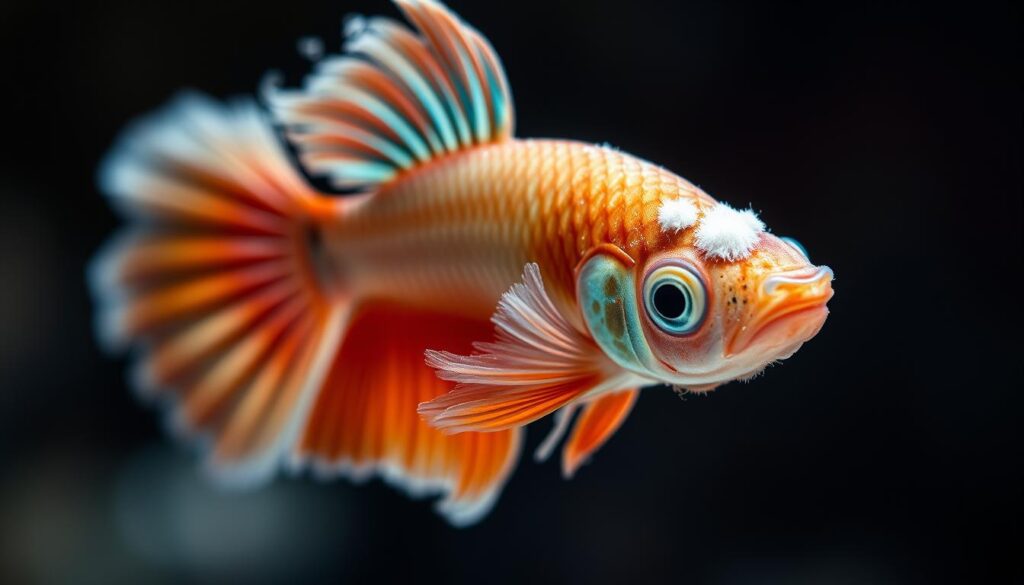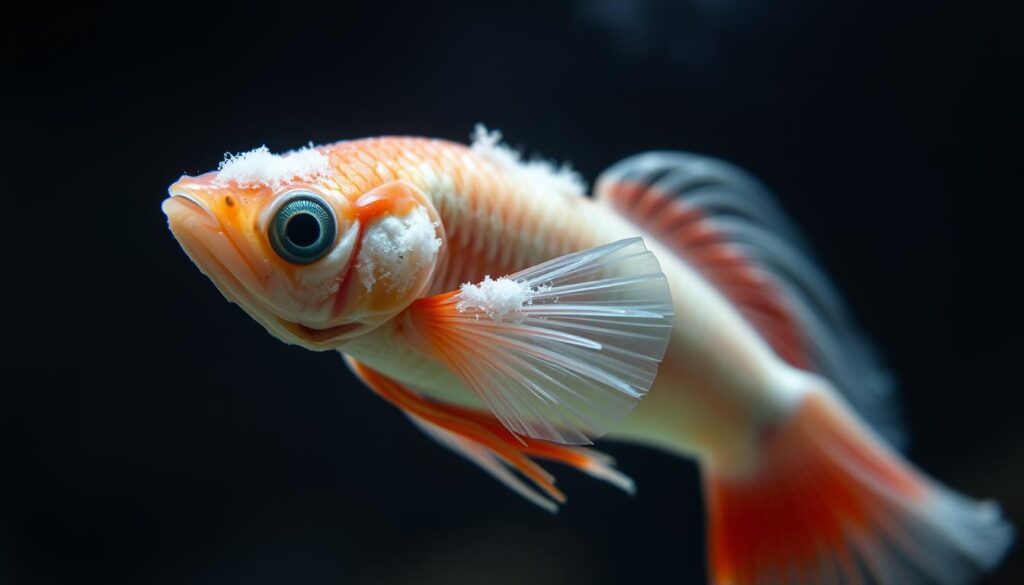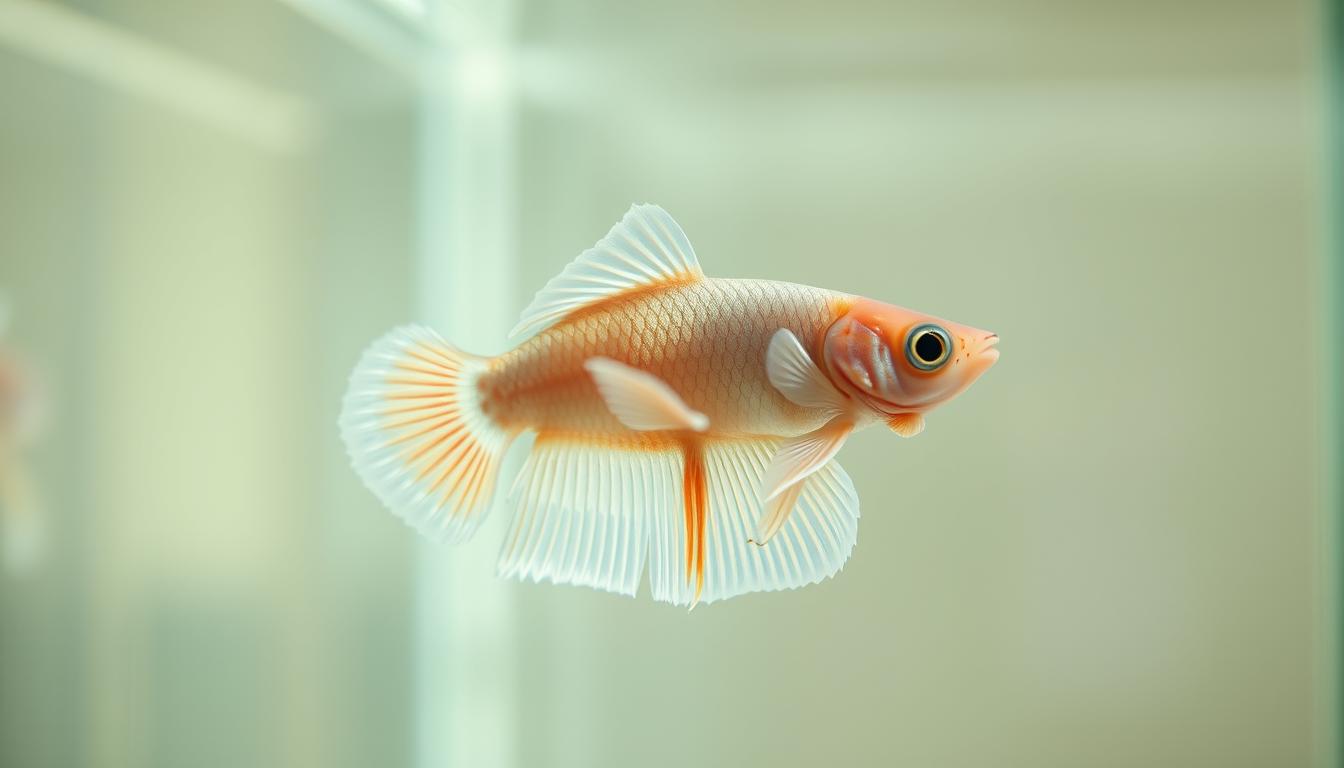Raising baby betta fish is exciting — until you notice something’s not right. Just like adult bettas, babies are also prone to various health problems. But here’s the thing: baby betta fish diseases can spread quickly and become fatal if not caught early.
In this guide, we’ll uncover the most common diseases affecting baby bettas, what symptoms to watch for, and simple treatment methods to help your little finned friends recover fast. Whether you’re a new fish parent or an experienced aquarist, this article will help you protect your baby bettas before it’s too late.
We understand that keeping your betta healthy can be a challenge, but don’t worry, we’ve got your back! With the right knowledge, you can identify potential health problems and take action to help your betta recover. In this article, we’ll explore the common health issues that can affect your betta and provide you with practical tips on how to keep them healthy and thriving.
Key Takeaways
- Common signs of illness in betta fish include lethargy, loss of appetite, and labored breathing.
- Regular water changes and proper tank maintenance can help prevent many health issues.
- Bacterial, parasitic, and fungal infections are common health problems in betta fish.
- Quarantining your betta can help prevent the spread of disease.
- Proper nutrition and a balanced diet are essential for maintaining your betta’s overall health.
Understanding Baby Betta Fish Health
Baby betta fish health is crucial for any aquarium lover. We’re here to help you understand what to look for. Knowing their behavior and appearance is key to their well-being.
Normal Behavior and Appearance of Healthy Fry
Healthy baby betta fish swim actively and show bright colors. They should eat well and play with their surroundings. Any odd behavior, like being very tired or not wanting to eat, could mean they’re sick.
Why Baby Bettas Are More Vulnerable Than Adults
Baby betta fish get sick easily because their immune systems are still growing. The quality of their water, food, and tank environment matters a lot. Keeping these conditions right is vital for their survival.
Essential Health Monitoring Practices
Watching your baby betta’s health closely is important. Look for signs of illness like color changes, frayed fins, or odd swimming. Keep the water clean and feed them well to help them stay healthy.
Common Baby Betta Fish Diseases and Their Causes
Baby betta fish can get sick, and knowing the signs is crucial. We’ll look at common illnesses and how to spot and prevent them.
Environmental Factors That Trigger Illness
Poor water quality is a big problem for baby betta fish. High levels of ammonia, nitrite, or nitrate stress them out. It’s important to change the water often and check the water quality.
Water temperature changes also affect baby betta fish. They don’t like sudden changes, which can make them sick.
Genetic Predispositions in Betta Fry
Betta fish can pass on health traits to their babies. Some breeds are more likely to get certain diseases because of their genes.
Nutritional Deficiencies and Their Effects
A good diet is key for baby betta fish. Without the right nutrients, they can grow poorly and get sick easily. Make sure they eat a balanced diet.
| Disease Cause | Common Diseases | Prevention Tips |
|---|---|---|
| Environmental Factors | Bacterial Infections, Fungal Growth | Regular Water Changes, Maintain Optimal Temperature |
| Genetic Predispositions | Swim Bladder Issues, Physical Deformities | Choose Healthy Breeding Stock, Avoid Inbreeding |
| Nutritional Deficiencies | Poor Growth, Weakened Immune System | Provide Varied, Nutrient-Rich Diet |

By knowing these causes and taking action, you can keep your baby betta fish healthy. This will help them live a long and happy life!
Identifying Bacterial Infections in Baby Bettas
Bacterial infections are a big problem for baby betta fish. It’s important to spot them early to treat them well. As a betta fish owner, watching your fish’s health closely is key. These infections can show up in many ways, from mild to serious, and can be caused by bad water, stress, or injury.
Columnaris (Cotton Mouth Disease)
Columnaris, or Cotton Mouth Disease, is a bacterial infection. It shows up as white or grayish patches on your betta’s mouth, gills, or body. It spreads fast in tanks. If you see any unusual growths or color changes, act quickly!
Fin and Tail Rot Symptoms
Fin and tail rot is another common problem. It makes your betta’s fins and tail look ragged or frayed. If it gets worse, the fins might fall off, leaving your fish open to more infections.

Dropsy and Body Swelling
Dropsy makes your betta’s body swell up with fluid. It’s not just a bacterial issue, but it can be a sign of one. Watch for any swelling or bloating in your betta.
Treatment Options for Bacterial Diseases
To treat bacterial infections in baby betta fish, you need to do a few things. First, make sure the water is clean by changing it often and keeping the right water conditions. You can also use aquarium antibiotics. Always read the instructions carefully and talk to a vet if you’re not sure.
| Disease | Symptoms | Treatment |
|---|---|---|
| Columnaris | White or grayish patches on mouth, gills, or body | Antibiotics, improved water quality |
| Fin and Tail Rot | Deterioration of fins and tail | Antibiotics, improved water quality |
| Dropsy | Body swelling and discomfort | Address underlying bacterial issue, improve water quality |
Parasitic Diseases in Baby Betta Fish
Parasitic diseases can be tough on baby betta fish, but you can help them. Knowing how to tackle these issues is key. Early detection and treatment are crucial for your fish’s health.
Ich (White Spot Disease): Early Detection
Ich, or White Spot Disease, is common in fish. Look for tiny white spots on your betta’s skin and fins. If your fish is scratching or swimming oddly, check for Ich!
Early detection is key: Keep an eye out for white spots. Act fast if you see any.
Velvet Disease: The Golden Dust Killer
Velvet Disease is another issue for baby betta fish. It’s caused by a parasite that makes a yellowish dust on the fish’s body. Look for signs like rapid breathing, lethargy, and loss of appetite. Keep an eye out for these symptoms, as it can spread fast.
Internal Parasites and Their Symptoms
Internal parasites are harder to spot but have signs. Watch for weight loss, labored swimming, or changes in appetite. Consult a fish expert if you suspect internal parasites, as it’s tricky to diagnose.
Safe Parasite Treatments for Delicate Fry
Treating parasitic diseases in baby betta fish needs care. Always follow medication instructions and be cautious. Quarantining infected fish helps prevent disease spread to others.

Parasitic diseases are a big threat to baby betta fish. Being vigilant and acting quickly can help them recover. Remember, caring for sick betta fish requires patience, attention, and a willingness to learn.
Fungal Infections and Their Treatment
Fungal infections can be tough on baby betta fish. They show up as cotton-like growths on their bodies. It’s important to spot and treat these infections fast to keep your fish healthy.
Spotting Fungal Growth
Fungal infections often start on damaged areas of the fish. This includes wounds or fins hurt during fights. Look for a fuzzy or cotton-like look on your baby betta’s body or fins. If you see this, act fast!

Common Fungal Diseases
Some common fungal diseases in baby betta fish include:
- Cotton Wool Disease: It looks like cotton.
- Mouth Fungus: It grows around the mouth.
Safe Antifungal Treatments
When treating fungal infections, use antifungal meds safe for baby bettas. Here are some options:
| Treatment | Description | Dosage |
|---|---|---|
| API Fungus Cure | Works well against fungal infections | Follow package instructions |
| Seachem Metronidazole | Has antifungal and antibacterial properties | As directed on the label |
Keeping the water quality good is key to avoiding fungal infections. Regular water changes, proper filtration, and a balanced diet help keep your baby betta fish healthy!
Swim Bladder Disorders in Baby Bettas
Spotting swim bladder problems in baby betta fish needs a sharp eye and knowledge of their usual behavior. These issues can really upset both the fish and the owner. They often lead to odd swimming patterns.
Recognizing Swimming Abnormalities
Baby betta fish with swim bladder problems may swim strangely. They might struggle to float, swim in circles, or sink to the tank’s bottom. Seeing these signs means you should look into why it’s happening.
Causes: Constipation vs. Infection vs. Congenital Issues
There are many reasons for swim bladder issues in baby betta fish. Constipation is common, caused by eating too much or not enough fiber. Infections, like bacterial or fungal, can also hit the swim bladder. Sometimes, the problem is there from birth.
Treatment and Management Approaches
Helping a sick betta fish means fixing the swim bladder problem’s root cause. For constipation, change their diet and feeding habits. Infections might need medicine, and congenital issues need a special care plan. This plan should make their life as comfortable and stress-free as possible.
Knowing the reasons and using the right treatments can help your baby betta fish get better. This way, they can live a happy and healthy life.
Setting Up a Hospital Tank for Sick Baby Bettas
Caring for sick baby bettas needs a special place. That’s why a hospital tank is essential. It helps them recover better when they’re not feeling well.
Essential Equipment and Supplies
To create a hospital tank, you’ll need some key items. Start with a small tank, about 1-2 gallons. You’ll also need a heater for the right temperature, a sponge filter for clean water, and water conditioner to remove harmful chemicals.
Optimal Water Parameters for Recovery
Keeping the water just right is key for your betta’s recovery. The best temperature is 78-82°F (25-28°C). Also, change the water about 25% every day to keep it clean.
| Parameter | Ideal Value |
|---|---|
| Temperature | 78-82°F (25-28°C) |
| pH | 6.5-7.5 |
| Ammonia/Nitrite | 0 ppm |
Medication Administration Techniques
It’s important to give medication correctly. Always follow the instructions and finish the treatment, even if your betta seems better early on.
Monitoring Progress and Recovery Signs
Watch your baby betta closely. Look for signs of getting better like more activity, better appetite, and fewer symptoms. This helps you adjust the treatment as needed.
Water Quality Management to Prevent Baby Betta Fish Diseases
Keeping the water clean is key for your baby betta fish’s health. Bad water can cause diseases that are hard to treat. Let’s look at how to keep the water right for your fish to stay healthy!
Testing Protocols and Frequency
Testing the water often is the best way to stop diseases. Test the water at least once a week. Use a good test kit to check for ammonia, nitrite, and nitrate levels.
The API Freshwater Master Test Kit is a great choice. It checks pH, ammonia, nitrite, and nitrate levels. It’s simple to use and gives accurate results.
Safe Water Change Procedures for Fry
Changing the water for your baby betta fish needs to be done carefully. Don’t make sudden changes, as it can stress them out. Instead, change 25-30% of the tank water every week. Use a gravel vacuum to clean the substrate.
Addressing Ammonia, Nitrite, and Nitrate Issues
If you find high levels of ammonia or nitrite, act fast! Do a water change right away to lower the toxin levels. Use water conditioners like API Stress Coat or Tetra AquaSafe to neutralize the toxins. For nitrate problems, add live plants to your tank. They can soak up extra nitrates.
Ideal Temperature and pH Maintenance
Baby betta fish like warm water, between 78-82°F (25-28°C). Use a good aquarium heater to keep the temperature steady. For pH, they do best in slightly acidic to neutral water, with a pH of 6.5-7.5. Check the pH often and adjust as needed.
By following these tips, you’ll make a healthy home for your baby betta fish. Remember, it’s easier to prevent sickness than to cure it, especially for betta fish illness prevention!
Nutritional Support for Sick Baby Bettas
Nutritional support is key for sick baby betta fish. It helps them get better and regain strength. When they’re sick, they often don’t want to eat, making it hard to give them the nutrients they need.
Appetite Stimulation Techniques
To get them to eat, try live or frozen foods like brine shrimp or daphnia. These foods are nutritious and appealing to sick baby bettas. Also, try warming the water a bit. This might make them more interested in eating.
Specialized Foods for Ill Fry
It’s important to give sick baby bettas foods that are easy to digest. Commercial fry foods made for betta fish are a good choice. They’re made to meet their nutritional needs. You can also add finely chopped, fresh foods like bloodworms.
Vitamin and Mineral Supplements
Adding vitamin and mineral supplements to their food can boost their immune system. Look for fish-specific products and follow the instructions carefully. This prevents over-supplementation.
Feeding Frequency and Portion Control
Feed sick baby bettas small, frequent meals instead of one big meal. This helps their digestive system. Watch how they react and adjust the feeding schedule as needed.
With the right nutritional support, your sick baby betta fish can recover faster. They’ll soon be back to their vibrant, healthy selves.
Conclusion: Building a Healthy Future for Your Baby Betta
We’ve looked at common health issues in baby betta fish. These include bacterial and parasitic diseases, swim bladder disorders, and fungal infections. Knowing about these problems helps you prevent them and keep your betta healthy.
Preventing diseases is key. Regular water changes, good food, and a clean tank are important. Also, watching your betta closely every day helps catch problems early.
With care and quick action when needed, your betta can live a long, healthy life. Keep learning about betta health and share your knowledge. This helps build a community that cares for these beautiful fish.
Read Also Betta Fish Diseases with Pictures and Treatment – Save Your Fish Before It’s Too Late

